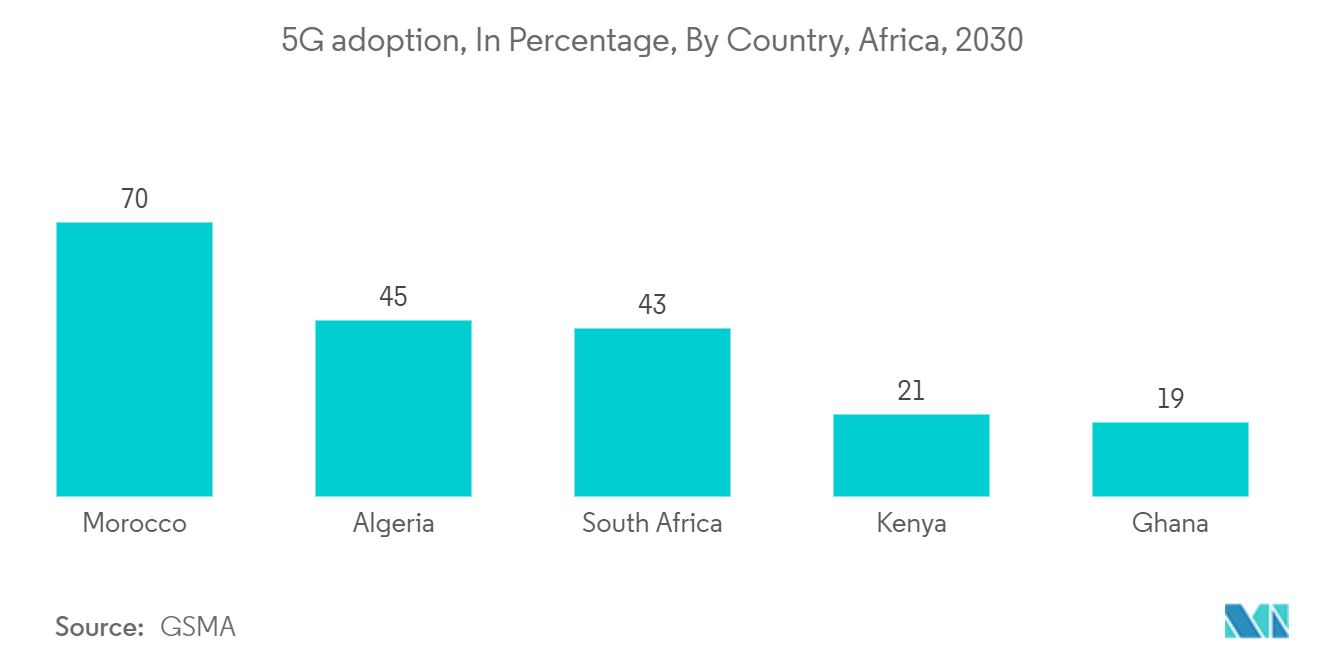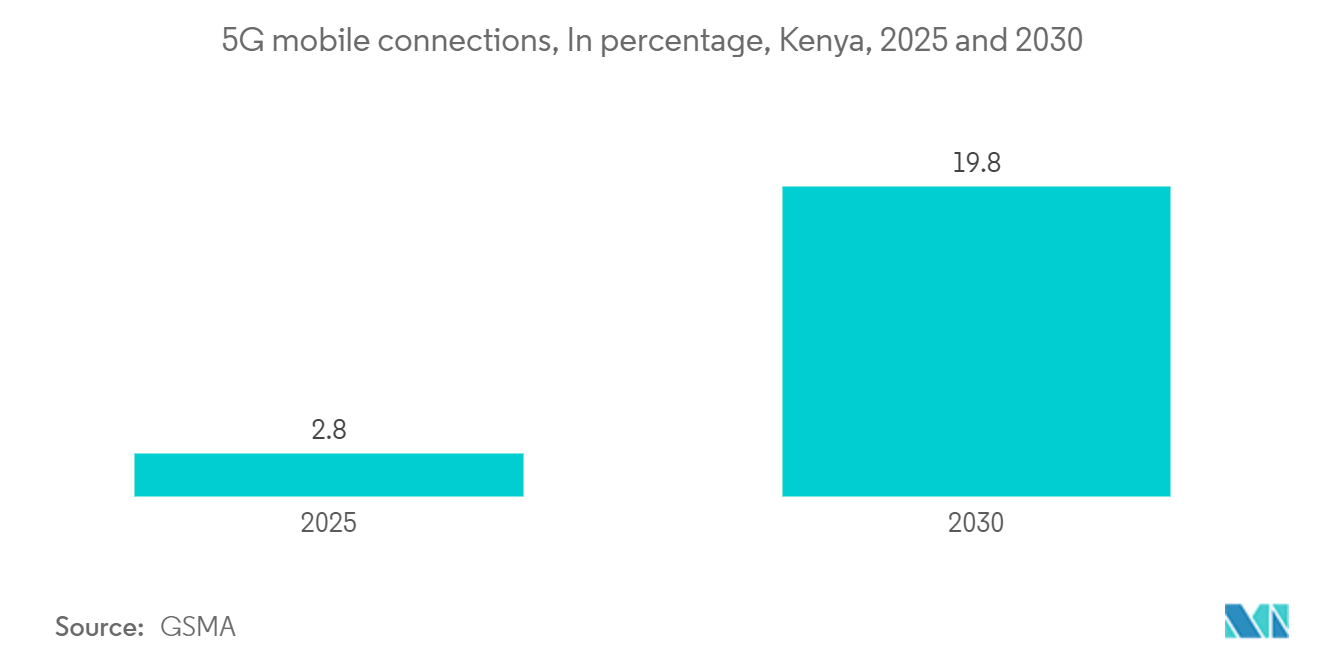Market Trends of Kenya Telecom Industry
The Demand for 4G and 5G Services is Rising
- Many market players are investing in building a 5G infrastructure. For instance, Safaricom rolled out its 5G services in Kenya in October 2022, starting with 35 active sites in key cities like Kisumu, Nairobi, and Mombasa, as well as Kisii and Kakamega. Safaricom rolled out 5G services in 11 Kenyan towns, a number that surged to 28 by April 2023. The company had planned to boost its 5G sites from 205 to an ambitious 800 by March 2024. Safaricom's strategic focus is to emphasize 5G primarily for fixed Wi-Fi services, targeting homes and offices with the highest demand.
- Kenya has seen a notable surge in digital adoption, reshaping governmental and business operations and redefining citizen interactions with services. The Kenyan government aims to enhance service delivery, transparency, and overall efficiency by prioritizing digital adoption. 5G facilitates fast speeds, with download speeds reaching up to 1 Gbps, which means it outperforms its predecessors, 4G and 3G, by a considerable margin, helping perform tasks efficiently.
- Streaming devices for movies, TV shows, and music are also growing. Many platforms, such as Netflix and Spotify, require high-speed Internet for seamless user experiences, driving the market for 4G and 5G services. Additionally, there is a growing potential to capitalize on digital gaming, especially for cloud-based gaming services, which demand high-speed connectivity and minimal latencies. As per data by GSMA, the adoption of 5G in Kenya is expected to account for 21% of total connections by 2030.
- Moreover, consumers are demanding service quality and higher speeds for their internet usage. This demand is pushing telecom providers to enhance network capabilities with 4G and 5G technologies. Consumers require faster Internet for online transactions, streaming, and remote work.

Data and Messaging Services are Expected To Witness Market Growth
- The penetration of affordable smartphones is growing, which has enhanced mobile data usage. Most people in Kenya use mobile devices to access the Internet, driving data consumption. Investments in 4G networks and rollouts of 5G connectivity are accelerating internet speeds, further encouraging more data usage.
- Nairobi is Kenya's epicenter for data center growth and foreign investments, with other cities transitioning toward similar trajectories. In August 2023, IXAfrica Data Centre Limited, a key player in hyperscale-ready data centers in East Africa, partnered with Tilisi Developments PLC, a prominent real estate developer. Together, they announced that IXAfrica inked a term sheet to acquire 11 acres of prime Nairobi land from Tilisi as its second data center campus. This move signified a significant milestone for both entities and underlined a substantial stride in bolstering East Africa's data infrastructure.
- The growth of online shopping and mobile money services like M-Pesa has increased data traffic. Many market players are expanding their services for revenue growth. For instance, in March 2024, Coronation Group, Access Holdings PLC, Safaricom PLC, and M-PESA Africa joined forces in a strategic alliance. This alliance planned to enhance African remittance access, fostering financial inclusion and economic growth. Specifically, they plan to establish a remittance corridor linking East and West Africa, bridging major economies on the continent.
- Kenya is in the nascent stages of 5G adoption. The primary hurdle lies in the patchy network coverage, making it a luxury for most users. Additionally, the mobile devices and routers that work with them are quite expensive for the average Kenyan consumer or business, which creates an opportunity for market players to develop affordable solutions. To bridge this gap, Kenya must not only expand and democratize its 5G networks but also strive to make the associated devices more cost-effective.
- The growth of e-commerce platforms such as Jumia and Kalimall is increasing the need for reliable internet connections. Promoting online shopping and digital marketplaces is also driving usage. Generally, people in Kenya use mobile phones for data usage. According to GSMA data, Kenya's 5G mobile connection is expected to reach 2.8 million by 2025.


